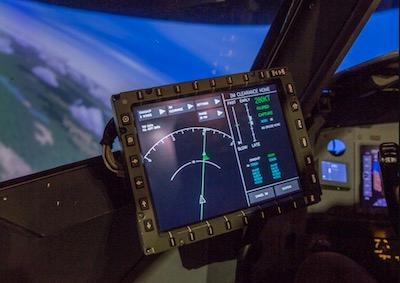Fri, Oct 05, 2018
Flight Deck Interval Management Will Provide Air Traffic Controllers More Precise Information As They Work To Space Aircraft Coming In On Approach
The FAA is optimistic about a NASA-developed technology that promises to increase capacity and reduce delays, fuel burn and emissions.

The FAA, NASA and others from the aviation industry today celebrated the transfer of a technology developed by NASA that will be used by the FAA and airlines.
The new technology, called Flight Deck Interval Management (FIM), integrates with another technology called Terminal Spacing and Sequencing (TSAS) to improve the use of performance-based procedures – to make it more efficient to land in congested terminal airspace.
FIM will provide air traffic controllers more precise information as they work to space aircraft coming in on approach. Controllers receive visual aids on their screens that help them execute clearances and conform to sequencing schedules to help aircraft arrive on time. The controller informs the pilot of the aircraft’s trajectory and the pilot enters the information into the FIM system.
The information is processed for the pilot through a satellite based navigation tool called Automatic Dependent Surveillance-Broadcast (ADS-B). With this information, the pilot assesses what speed to fly to enable them to do a performance based procedure into the airport.
The combined FIM and TSAS tools will provide numerous benefits.
Using performance-based operations, aircraft will spend less time in the air burning fuel and emissions. When aircraft burn less fuel, it saves money for the airlines. Passengers benefit because there’s a better chance their flights will arrive on time.
The FAA, NASA and industry are working together under a project called Air Traffic Management Technology Demonstration 1 or ATD-1 to bring new technologies to market that are designed to improve arrival times. FIM is one of the technologies that stems from that partnership. Boeing, Honeywell and United Airlines participated in the FIM development and flight test which involved two aircraft from Honeywell’s flight test fleet as well as a United 737.
(Source: FAA news release)
More News
From 2023 (YouTube Edition): "Ain’t Your Daddy’s Super Cub”—Don Wade Co-owned by Don and Ron Wade—the former of Don’s Dream Machines, a storied >[...]
Pilot-Rated Passenger Reported That The Pilot Did Not Adequately “Round Out” The Landing Flare And The Airplane Bounced And Yawed To The Right Analysis: The pilot state>[...]
Dead Reckoning Dead reckoning, as applied to flying, is the navigation of an airplane solely by means of computations based on airspeed, course, heading, wind direction, and speed,>[...]
Aero Linx: Lake Amphibian Club This website is created and sponsored by the Lake Amphibian Club, to help spread the word about these wonderful, versatile amphibians that can land j>[...]
“I am deeply honored to be sworn in as NASA administrator. NASA’s mission is as imperative and urgent as ever — to push the boundaries of human exploration, ignit>[...]
 Classic Aero-TV: In Praise of Alabamas Patriot Aircraft USA
Classic Aero-TV: In Praise of Alabamas Patriot Aircraft USA NTSB Final Report: Cirrus Design Corp SR22
NTSB Final Report: Cirrus Design Corp SR22 ANN's Daily Aero-Term (12.21.25): Dead Reckoning
ANN's Daily Aero-Term (12.21.25): Dead Reckoning ANN's Daily Aero-Linx (12.21.25)
ANN's Daily Aero-Linx (12.21.25) Aero-News: Quote of the Day (12.21.25)
Aero-News: Quote of the Day (12.21.25)



